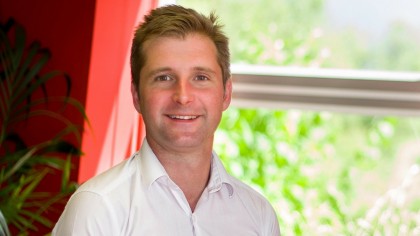How the Internet of Things will supercharge the cloud
Big data cloud services are the behind-the-scenes magic of the IoT

By 2020 at least 25 billion devices will be connected, according to Gartner. Welcome to the Internet of Things, the next major wave of computing that will supercharge businesses by taking small data from remote devices and collectively making it big data on the cloud.
"To accommodate this growing demand for connectivity, the existing cloud infrastructure will need to grow exponentially," says Jonathan Wilkins, marketing director of industrial automation components supplier European Automation.
"There is a good chance these connected devices will not have internal storage of their own, so will need to use the cloud instead," says Wilkins. "I think it's fair to say that in the next five to ten years we will see 95% of companies use some kind of cloud technology – public or private."

Is the IoT the 'killer app' for the cloud?
"Big data cloud services are the behind-the-scenes magic of the internet of things," says Michael Connaughton, Director Big Data, EMEA at Oracle, who thinks that expanding cloud services will not only catch sensor data, but also feed it into big data analytics and algorithms to make use of it. "The key to competitive advantage in IoT is not just capturing data from the real world, but getting insight before your rivals do."
The IoT is what the cloud was built for – it was designed to connect and collect data and devices from disparate platforms. At the IoT grows, that means ever more disparate operating systems need to communicate.
"Although we have seen a huge growth in cloud-based services over the past few years, as users have transitioned from the use of mostly Windows-based systems to other platforms, such as mobile and Mac, the explosion of IoT devices will increase this growth," says Adam Tyler, Chief Innovation Officer at identity protection and fraud detection technology company CSID.

Could data from IoT sensors overwhelm the cloud?
The IoT will swell the cloud, there's no doubting that – Cisco predicts that annual global data centre IP traffic will reach 10.4 zettabytes by the end of 2019, up from 3.4 zettabytes in 2014, and that's partly because of the growth in IoT devices. Will the network cope?
Sign up to the TechRadar Pro newsletter to get all the top news, opinion, features and guidance your business needs to succeed!
"The growth of software-as-a-service (SaaS) and the adoption of IPv6 will play an important part in ensuring tomorrow's cloud infrastructure is ready to accommodate the huge increase in data storage, transfer and analytics," says Wilkins. "The IoT can only happen through cloud, but today's cloud infrastructure still has a long way to go before it can accommodate for the huge amounts of data that connected devices will generate."
That's true, but it's incredibly unlikely that data from IoT sensors will ever overwhelm the cloud. "We may see some early issues with scaling, but it is our belief that IoT data will be able to be handled by existing cloud service implementations," says Tyler.

Velocity, not volume
Despite the sheer amount of data continuing to rise, it's important to remember that each sensor will be delivering tiny amounts of data to the cloud.
"It won't only be the sheer volume of the data, but the velocity and variety of the data that the cloud will have to manage and deal with," says Matt Davies, Head of EMEA Marketing at Splunk. "The data coming off a car, plane, train, industrial machinery, production line or building will be used to make critical decisions in real-time, and will need to be combined with other data, some of which will be historical."
Jamie is a freelance tech, travel and space journalist based in the UK. He’s been writing regularly for Techradar since it was launched in 2008 and also writes regularly for Forbes, The Telegraph, the South China Morning Post, Sky & Telescope and the Sky At Night magazine as well as other Future titles T3, Digital Camera World, All About Space and Space.com. He also edits two of his own websites, TravGear.com and WhenIsTheNextEclipse.com that reflect his obsession with travel gear and solar eclipse travel. He is the author of A Stargazing Program For Beginners (Springer, 2015),
